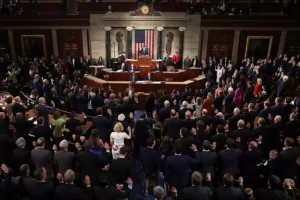NYC families anticipate news about admissions to middle, high schools

Tensions are rising ahead of an anticipated announcement about whether New York City middle and high schools will fully bring back selective admissions for the first time since the pandemic.
Removing test scores, attendance, and other “screens” from the selection process helped move the needle on desegregating the nation’s largest public school system, integration advocates said.
But families who support selective admissions thought the changes, sparked by pandemic-related learning disruptions, unfairly cost their children their top school choices.
Schools Chancellor David Banks is expected to unveil selection criteria next week, an education department spokesperson said, offering no other details.
The Adams administration has not highlighted school integration as a priority. Instead, the mayor has embraced screened programs that have long been segregated by race, class, and academic performance: He expanded “gifted and talented” programs and signaled a desire to open more specialized high schools.
Families across the five boroughs are already mounting letter-writing campaigns and petitions for and against schools that use screens in sorting the city’s 10- and 13-year-olds into sixth and ninth grade.
Some parent councils are calling for the removal of selective admissions, while others are calling for the opposite.
“We expect nothing less than the permanent elimination of middle school screens,” said Nyah Berg, executive director of New York Appleseed, which advocates for removing screened admissions at middle and high schools. “It was unjustifiable before the pandemic, and it’s just as unjustifiable now to measure a child as young as 9-years-old’s educational attainment, and to judge them by that for access to public middle school.”
PLACE NYC, a group that has pushed to preserve strict admissions screens to public middle and high schools, is circulating a petition that calls for removing lottery admissions, arguing that “academically advanced students need programs that meet their needs.”
Black and Latino students, as well as those from low-income families, with disabilities, or who are learning English as a new language are less likely to meet admissions requirements for selective schools, leaving such schools unrepresentative of the school system as a whole.
Research has found that diverse schools can lead to a slew of academic and social benefits for students, including better test scores, an increased likelihood of attending college, boosting leadership skills and confidence, and combating racial bias or stereotypes, according to The Century Foundation.








